Milwaukee’s Cannibal Sandwich: Not a Dahmer Joke
I think it probably behooves us to say that right off the bat. “Cannibal sandwiches” are a holiday tradition in Wisconsin, specifically in southeastern Wisconsin, specifically in the Milwaukee area of southeastern Wisconsin where Jeffrey Dahmer killed at least 15 people in the 80’s and early 90’s, consuming the vital organs of several of them. Cannibal sandwiches–sometimes they’re called “Wildcat” or “Tiger Meat” instead–consist of raw ground beef on rye bread with onion, and were being served in Milwaukee for holiday get-togethers long before Jeffrey Dahmer came along. An NBC News report from 2013 says they were linked to outbreaks of E. coli, or possibly salmonella, as early as 1972.
Are you hungry yet?
The basic recipe of a Cannibal Sandwich goes like this: take some freshly ground raw sirloin and put it on bread. Season with black pepper and onion. Eat.
Each year one or more health organizations–the Wisconsin Department of Health Services, the CDC, the USDA–issues a set of guidelines for safely eating raw meat sandwiches that amount to this advice: Don’t.
Still, Milwaukee is a German town, and the Germans are no strangers to delicacies made of raw meat. Here at the Tribunal, we’ve tried a raw meat sandwich or two ourselves: the German Mettbrötchen, the Belgian Martino, Danish Smørrebrød with beef tartare. It’s not necessarily a question of raw meat being unsafe. It’s a matter of how safe you can make it.
For example, if I were to buy good quality fresh top sirloin from a reputable butcher, take it home, cut the fat off it and dice it with a very very clean knife then grind it myself in a freshly sanitized meat grinder?
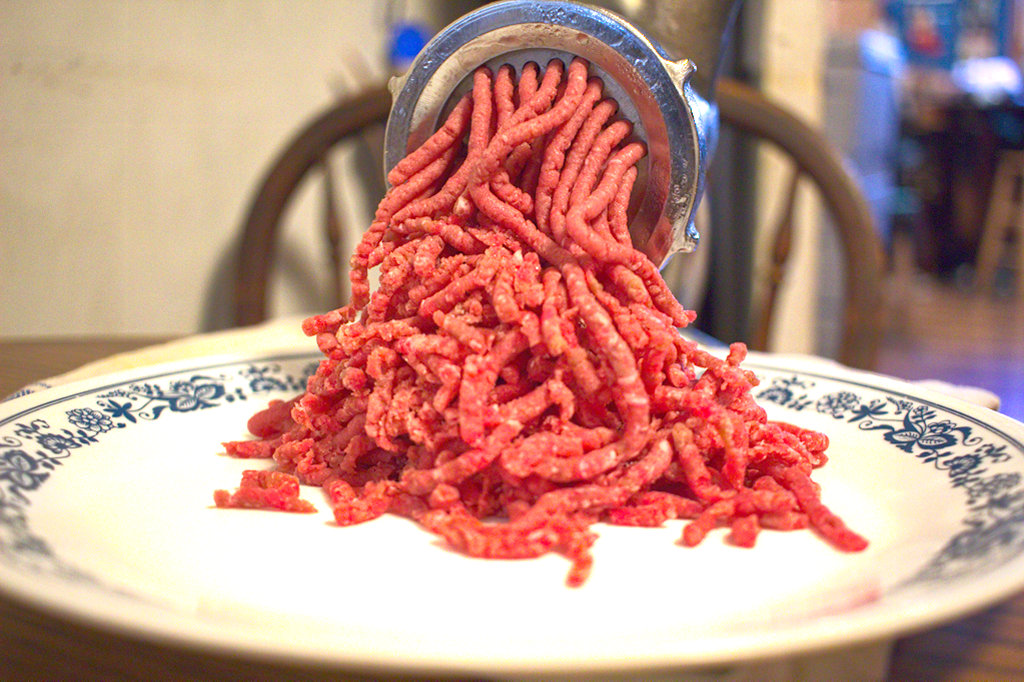
I feel relatively safe eating that particular ground beef raw. I don’t feel all that enthused by it, as raw unseasoned meat is not my bag. But I’m fairly sure no gastric misadventures will ensue.
The most basic form of the Cannibal Sandwich, to my knowledge, starts with a cracker or a slice of cocktail rye.
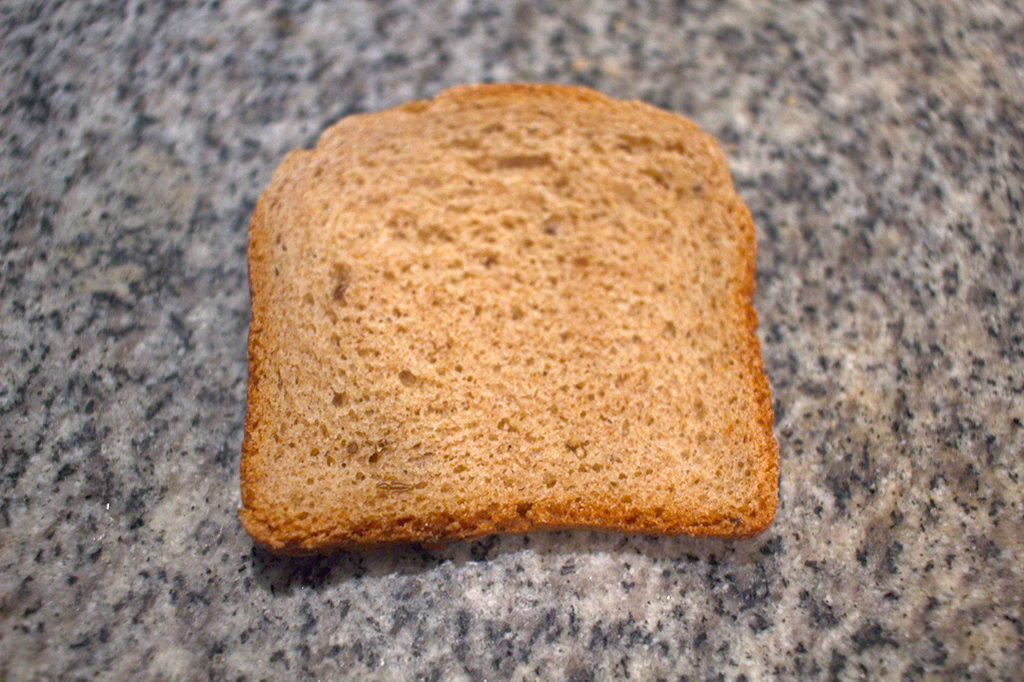
There’s nothing fancy here. We’re not whipping the raw meat into a frothy emulsion and piping it onto the bread. We’re just taking a (clean) knife and spreading it on there as if it were pâté.
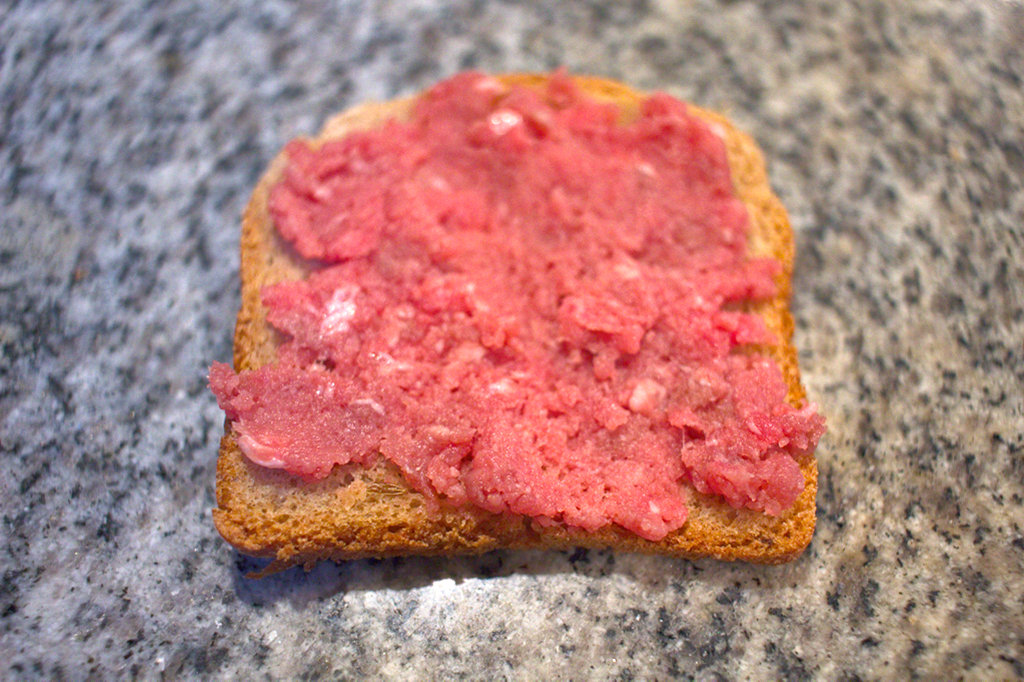
There’s no raw egg yolk, no Worcestershire sauce, no capers or shallots or seeded mustard. This is just plain raw beef. After spreading it on the bread, it can be seasoned with a little salt and pepper. Some of the sandwich’s enthusiasts I’ve watched on Youtube suggest a lot of black pepper. Then top it with some sliced onion and you’re done.
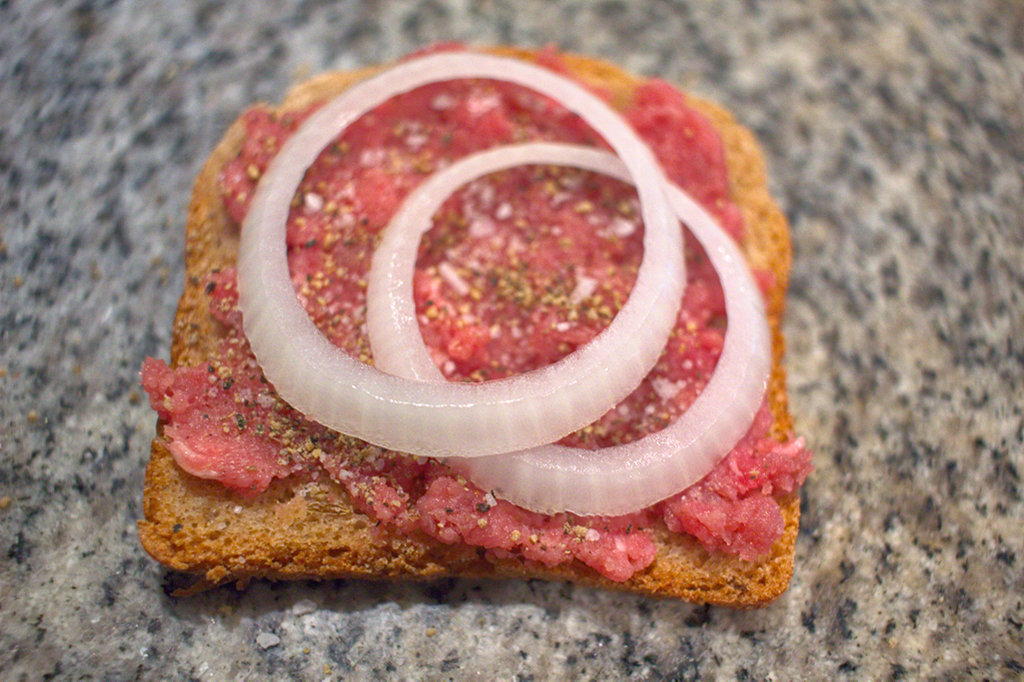
I’m not sure it even qualifies as an open-face sandwich, it’s so minimalist. I tried a little, and so did a few members of my family. It’s fine. It reminded me quite a bit of the hors d’oeuvres (pronounced horsey doovers) my family used to make from cocktail rye when I was younger–equal parts mayonnaise, finely-diced onion, and bad grated parmesan from the green tube, mixed together, spread on cocktail rye, and broiled until just browning.

The truth is, it’s really not much like the hors d’oeuvres of my childhood at all. It has in common with them exactly what it has in common with any savory spread served with onions on a slice of cocktail rye: it mostly tastes like onions and cocktail rye. The sirloin, at least such a thin schmear of it, is out of its league.
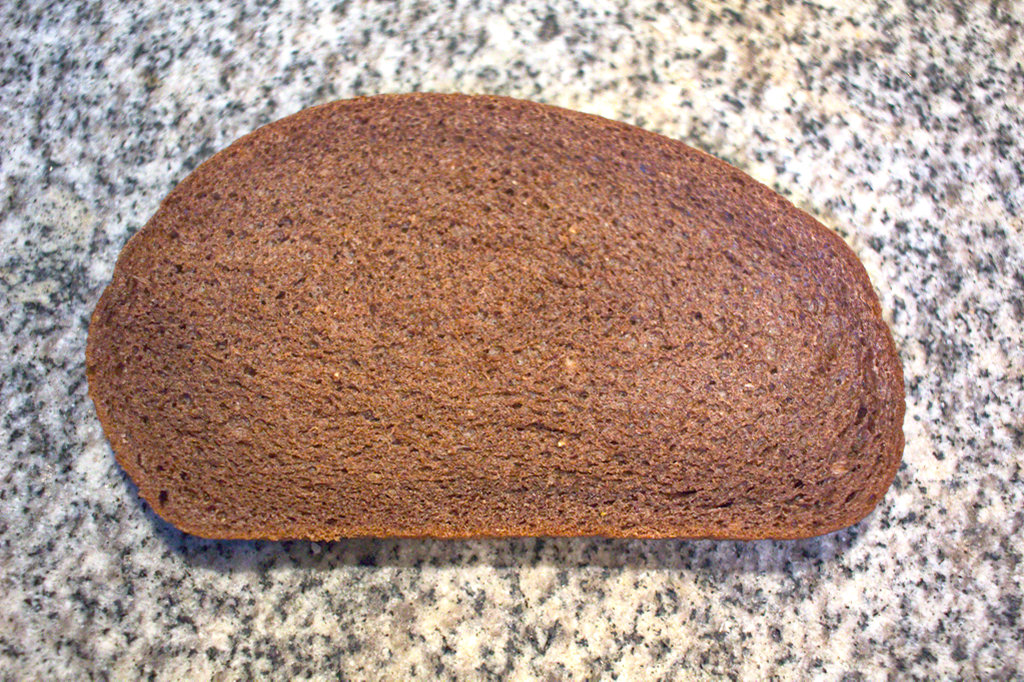
I tried it again, this time on American-style deli pumpernickel bread. Reading the ingredient list of this pumpernickel yielded a few surprises–the color was added through cocoa powder rather than dark grains or molasses, and onion powder and ground caraway were added to give it a more savory character that people might associate with a rye bread. Ah, the wonders of modern mass-produced food science.
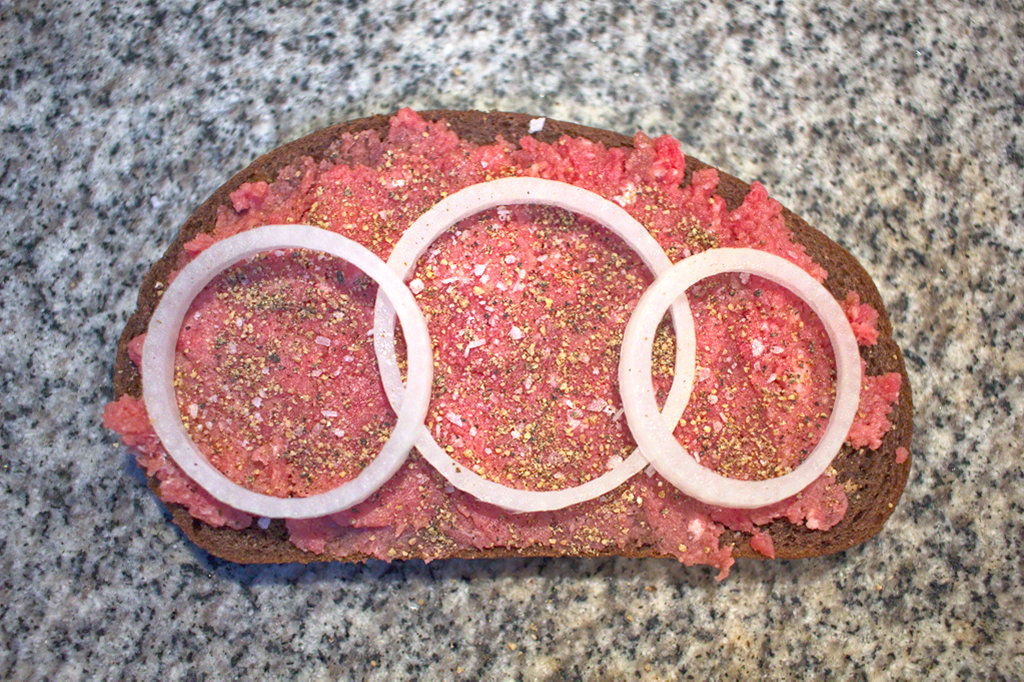
It’s not a terrible bread. It’s just that, while it looks like a pumpernickel, it tastes much like any other seeded, “Hearty,” Jewish rye bread. In fact, it tastes a lot like the cocktail rye we’d just tried, making this sandwich a much bigger version of essentially the same thing.
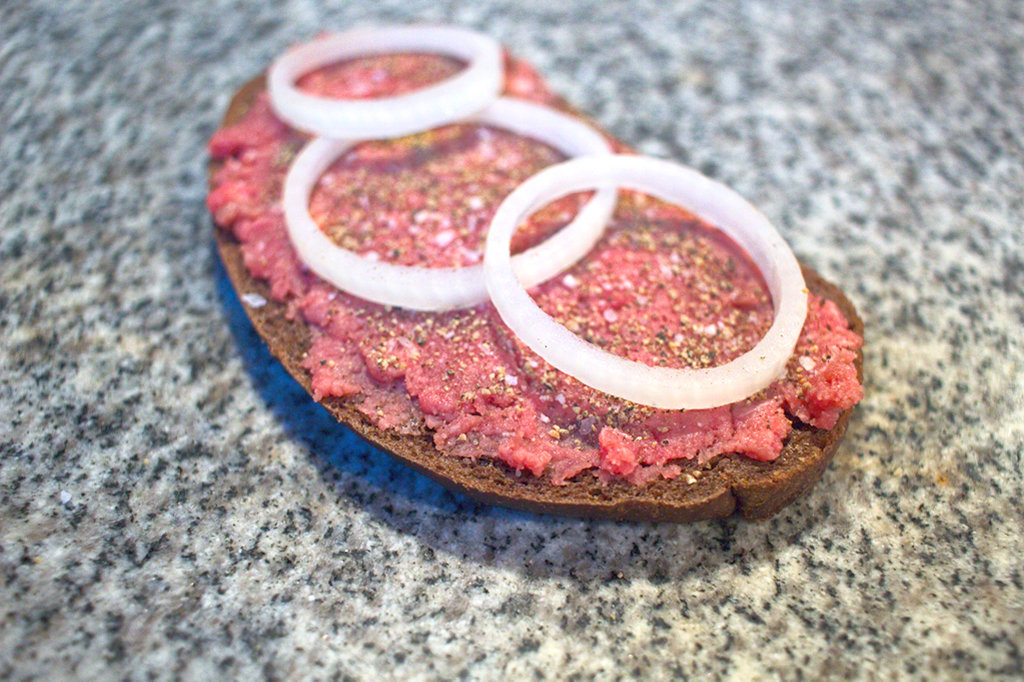
And it’s not terrible. But what makes a festive party snack in the holiday season isn’t necessarily the best choice for a late dinner in July, in the middle of a worldwide pandemic. It may not be a great idea in December either, if I’m being honest. I’d probably have thrown away the remaining ground sirloin–it was really too lean to do much else with it–if I hadn’t had a flash of inspiration how to add enough fat to it to make it into a tasty burger.
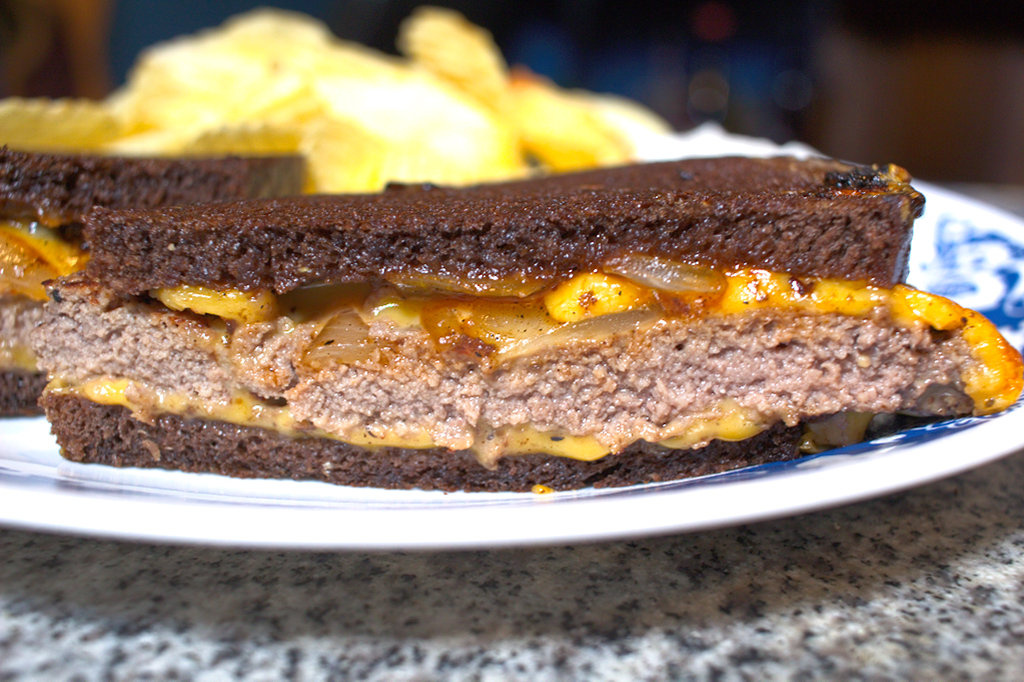
What do you think, Tribunal readers? Are you fans of the Milwaukee-style cannibal sandwich? I haven’t said much about it but there’s not much to say. It’s raw ground beef with onions, and you’re either into that or you’re not. I didn’t hate it but I don’t feel strongly enough about it to really champion it to you either. We do have some tastier looking sandwiches coming up in August and I’d rather turn my attention to those now. Thanks for reading!

I like sandwiches.
I like a lot of other things too but sandwiches are pretty great




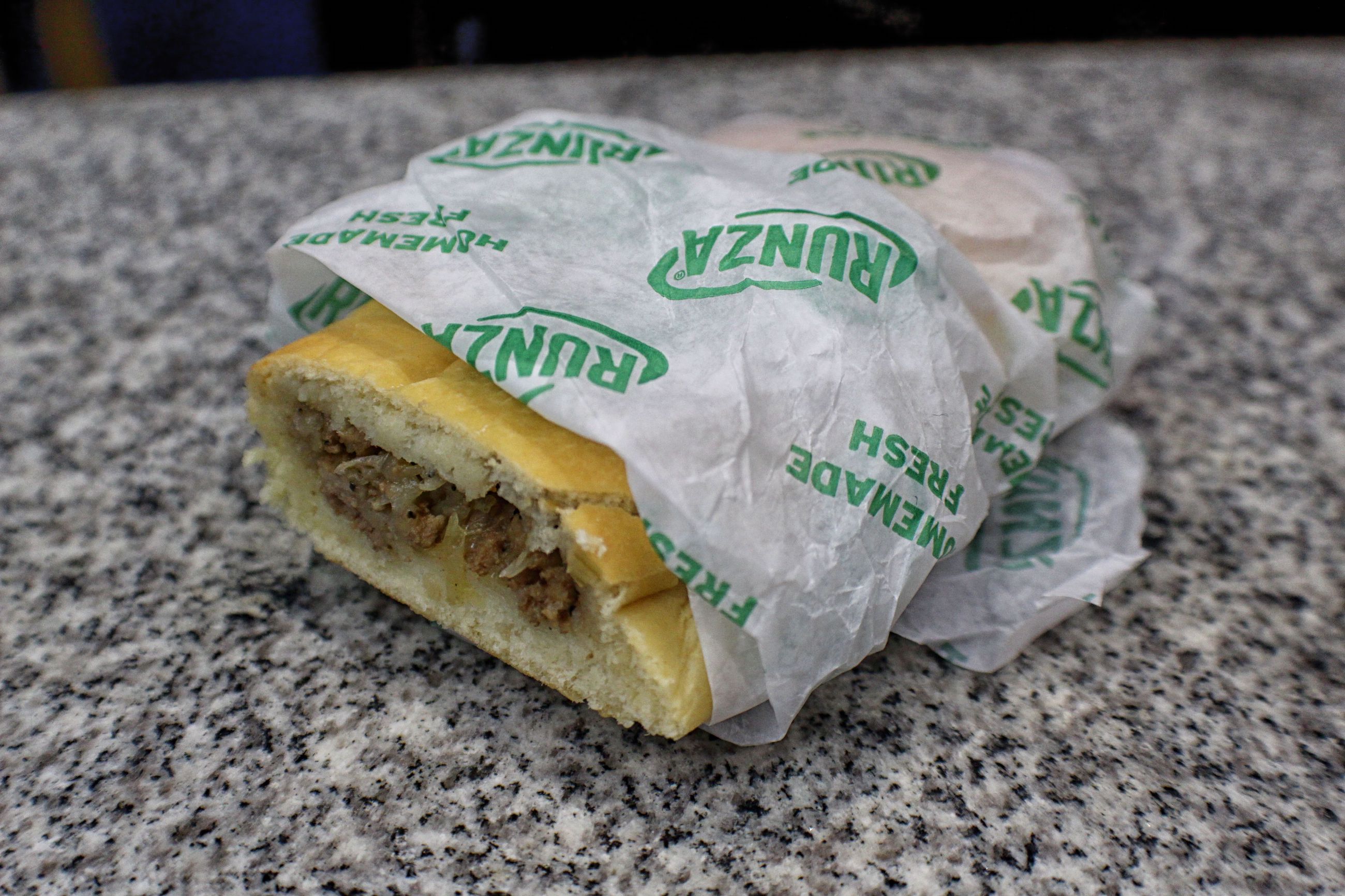






This post just reiterates how funny it is that in northern Europe raw ground beef is often called ‘filet américain’, including in the Martino and variations you linked to and which is perhaps my favourite Dutch sandwich. I’m sorry your country’s food safety standards have done this to you and your compatriots.
I hate this 😂
I’m sorry, Jeb! 🙁 How can I do better?
I’m from Milwaukee and have had this many times. It’s good stuff, when prepared and presented correctly. In my experience, we don’t even really consider it a sandwich, it’s always been more of an appetizer that we have at a buffet table at a function or party (for ex. to watch the Packers). It’s a dish meant to accompany cocktails or beer – a Brandy Old-Fashioned sweet goes well with it.
At the buffet table, the beef is presented on a large, refrigerated glass platter and is usually formed into a shape, for example a bull’s head, and people help themselves to as much as they want, spreading it on rye. Milwaukee rye is a traditional German rye or Polish rye, with caraway seeds. The reason that your ground sirloin didn’t have enough flavor is because it’s too lean for what this dish is about. Try at least 20% fat. You also need to put a lot more meat on your bread. The onions should be diced or sliced very thinly so they can be smushed easily to mix into the meat. You don’t need to over pepper it. In summary: you should try it again.